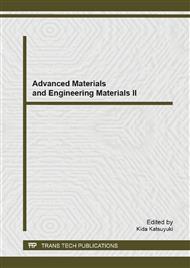p.94
p.98
p.106
p.110
p.116
p.120
p.124
p.128
p.133
Developing a Wearable Multifunctional Composite Component
Abstract:
This paper focuses on the design and development of a low-cost multifunctional composite component integrated into a shoe hill that generates power in the order of milliwats (mW) through piezoceramic (PZT) stacks and stores this harvested energy in a capacitor integrated into the composite. The use of a thin-film lithium battery integrated into the composite is also explored as a means of permanent power storage. PZT bimorph elements are stacked in a cantilever manner. The space in-between and around the elements is being filled with foam, which provides structural support as well as walking comfort. An insole composite with a PZT layer is also developed that is capable of producing 2.2mW of power to give a total power output of 12.2mW for the in-heel insole combination. The experimental results revealed that the use of PZT bimorph elements (d33=110) instead of polyvinylidene difluoride PVDF sheets (d33=20) increased the power generation potential over five folds, which is further compounded by stacking the PZT elements.
Info:
Periodical:
Pages:
116-119
Citation:
Online since:
April 2013
Authors:
Keywords:
Price:
Сopyright:
© 2013 Trans Tech Publications Ltd. All Rights Reserved
Share:
Citation:


